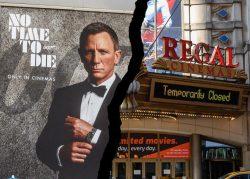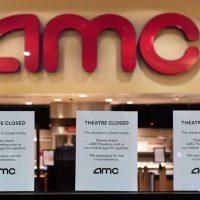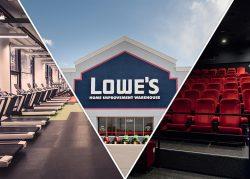Even before the pandemic, Ari Benmosche realized that running his movie theater in a traditional sense wasn’t sustainable.
The owner of the Lafayette Theater, a small venue in Suffern, New York, has shown the new “Star Wars” releases and movie marathons of holiday classics, always ending with “It’s a Wonderful Life.” But he could not get the theater back to profitability.
“The exhibition industry is like a totem pole. We, as a single-screen movie theater, are at the absolute bottom of that totem pole,” Benmosche said. “I am one guy with one screen and 1,000 seats.”
Read more



This isn’t the first time the theater’s first brush with failure. Twenty years ago it was set to be sold and gutted, but Benmosche’s family bought the property and saved it. Now, he must reimagine what a theater can be.
Benmosche isn’t alone. For many movie theaters, Covid-19, which has kept viewers at home and new releases from the screen, feels like the final curtain following years of dwindling audiences. That’s the case even for national chains of multiplexes.
In October, Cineworld, the owner of Regal Cinemas, announced the temporary closure of its 500 U.S. locations. AMC, staring down bankruptcy, said it would think twice about renewing some of its leases.
Movie theaters across the country had paid just 38 percent of their October rent as of Nov. 5, dead last among retailers, according to a report by Datex Property Solutions.
There is collateral damage, too. Movie theaters provide shopping centers with late-night traffic and serve as community gathering spaces. Their turmoil poses a threat to the developments that they help anchor.
“There are lots of businesses that are really reliant on them being successful and operating
well into capacity,” said Kennedy Smith, principal of Community Land Use + Economics Group, a consulting firm that focuses on the revitalization of locally owned businesses.
In 1995 there were 7,744 movie theaters across the United States. But by 2018, there were just 5,869, according to Statista. The drop can be attributed to the rise of at-home movie watching, which gained steam as VHS tapes gave way to DVDs and then streaming services. Rising costs for theaters were also a factor.
While some movie-goers remained eager to sink into the cushy seats of their local cinema with a tub of buttery popcorn and oversized drink — theaters’ profits come largely from concessions — the pandemic dealt a crushing blow.
For months, movie theaters were shuttered. And though most have reopened under capacity restrictions, studios have held their releases as Covid proliferates and fear of gathering indoors persists.
More theater owners have had to think about other ways to use the properties.
“Everything has a kind of a lifespan, whether that be a physical lifespan, or experiential lifespan. Oftentimes during the 25-, 50-, 75-year lifespan of a building, it needs to be repositioned in order to best serve the public,” said Grant Gagnier, New York City business unit leader of Gilbane Building Company, a construction management firm.
Benmosche is planning to upgrade his theater with portable seats and a mechanical screen that can be retracted, which will allow the venue to also host live entertainment.
His theater remains closed, despite New York state allowing for theaters to reopen at 25 percent capacity or up to 50 people per screen. The pandemic seemed like the perfect time for renovations.
Other theaters have also been increasing their offerings in recent years, such as by adding three- (or more) dimensional screens, or dining options.
The pandemic could trigger more repurposing of movie houses, but that, too, can be difficult.
“In New York, we always default to residential — in most cases, the highest and best use,” said Ariel Aufgang, principal at Aufgang Architects. “Multifamily requires windows, a lot of natural light and air. And these theaters are essentially big-box commercial structures.”
It is not impossible, though.
The Victoria Theater in Harlem once housed 2,000 seats as a performing arts theater, before it was used as a multi screen movie theater in the 1970’s. Then, in 1989, it went dark.
Redesigned by Aufgang, it’s now home to 199 residential units and 211 hotel rooms. To recall its original use, the facade, signage, marquis, and lobby were incorporated into the design.
“You really have to think about what the innate demands and needs are for that local community where the asset is and try to figure out how to synthesize a set of uses that produce commercial viability,” said Craig Livingston, principal of Exact Capital Partners, which redeveloped the property.
And while closures may happen, theaters are hardly dead. In Vacaville, California, the Deville Theater has been on the market for just two months and already has four parties interested in it as an entertainment venue.
“The path of least resistance is finding a building that is already built this way. It’s cost-prohibitive to build from scratch, or to retrofit,” said Mark McGuire, the broker for the property and owner of McGuire Capital Group Realty. “I think overall we’re just surprised by the optimism of what’s going on right now.”
